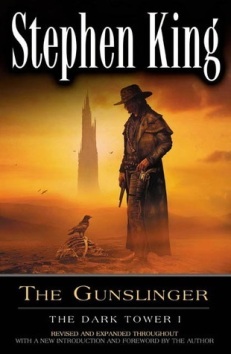
From Wikipedia
When Darth Vader revealed he was Luke Skywalker’s father in Star Wars Episode V: The Empire Strikes Back, people lost it. It’s widely considered one of the best plot twists in film history, and for good reason. Who would’ve guessed that the protagonist was the antagonist’s son all along?
Of course, George Lucas isn’t the only person ever to use this twist. In fact, Neil Gaiman (my favorite author) uses it in his 2001 novel American Gods (my favorite book). If you haven’t read it or don’t want to be spoiled for the show, turn back now.
Still here? Okay, cool. The book’s bad guy, Mr. Wednesday, is the father of Shadow, the book’s good guy. Boom!
Now here’s my question. How does Neil Gaiman repeat such a classic plot element without having readers roll their eyes? How does he take the “I am your father” moment and make it his own? Let’s investigate.
The Buildup
In Star Wars and American Gods, the identities of Luke and Shadow’s fathers carry differing importance. In Star Wars, for instance, when Obi Wan Kenobi tells Luke that his father was a jedi, it’s a huge contributing factor toward him leaving home. He takes his father’s lightsaber, he joins his father’s order, and it’s implied that he wants to avenge his father’s death. That’s because at this point in the story, he believes Darth Vader killed his father.
In American Gods, Shadow couldn’t care less about the identity of his father. We just know that he never met his dad. That’s it. No hints at who dad was, what he did, or where he went. The man’s identity is so vague that I found myself forgetting his existence entirely. Only near the end does it become relevant.
Here we see how this differing importance sets these plot elements apart from one another. If Shadow revered his dad and accepted his quest to follow in his footsteps, these elements might feel too similar. Since he doesn’t, the respective “I am your father” moments feel distinct.
The Reveal
In Star Wars, the reveal of Darth Vader’s true identity is intensely dramatic. It’s enough to make Luke sob and then hurl himself down a space shaft. And for audiences everywhere, it’s a shock that’s still remembered today. Just check out the memes that are still being created:

In American Gods, the revelation of the antagonist being the protagonist’s father is far more understated. When he has a vision of his mother dancing with his father, his reaction to dad’s true identity isn’t nearly so dramatic as Luke’s. Here’s the passage:
“Shadow found that he was completely unsurprised when he recognized the man who dances with [his mother]. He had not changed that much in thirty-three years.”
To a certain extent, this is just Shadow. Due to his time in prison, he’s learned to suppress his emotion. Yet this muted response also differentiates the revelation from that of Star Wars. Shadow doesn’t deny the truth. Instead, he accepts it. In fact, he already suspected it.
The Payoff
Once we know who these characters’ fathers really are, the ramifications on the subsequent story are much different. At the end of Empire Strikes Back, for instance, Luke is in disbelief over what he’s learned. Then, in the following film, his goal is no longer to defeat Vader. Instead, he seeks to redeem him.
In American Gods, Shadow’s father’s identity is more thematic than anything else. Shadow finds out who Mr. Wednesday is roughly around the same time he discovers Wednesday’s plot to sacrifice a bunch of gods to himself, thereby resurrecting himself. (Simple plan, right?) There’s no moment of, “Gee, I’d better redeem my dad.” In fact, Wednesday’s true identity doesn’t change Shadow’s plan in any way. He still stops the other gods from going to war, which thwarts dear dad’s plan. So unlike Luke Skywalker, Shadow wants to defeat his father even after discovering his true identity.
In Conclusion
Writers tend to avoid using twists they’ve seen in other works. Sometimes we fear that unless our plots are unique, we won’t be taken seriously as artists. That’s not the case! Rather, it’s perfectly fine to reuse a plot element, so long as we make it our own. I think the above example illustrates that point perfectly.
Now get out there and write!
Kyle A. Massa is a speculative fiction author living somewhere in upstate New York with his wife and their two cats. His stories have appeared in numerous online magazines, including Allegory, Chantwood, and Dark Fire Fiction. His debut novel, Gerald Barkley Rocks, is available now on Amazon Kindle.











